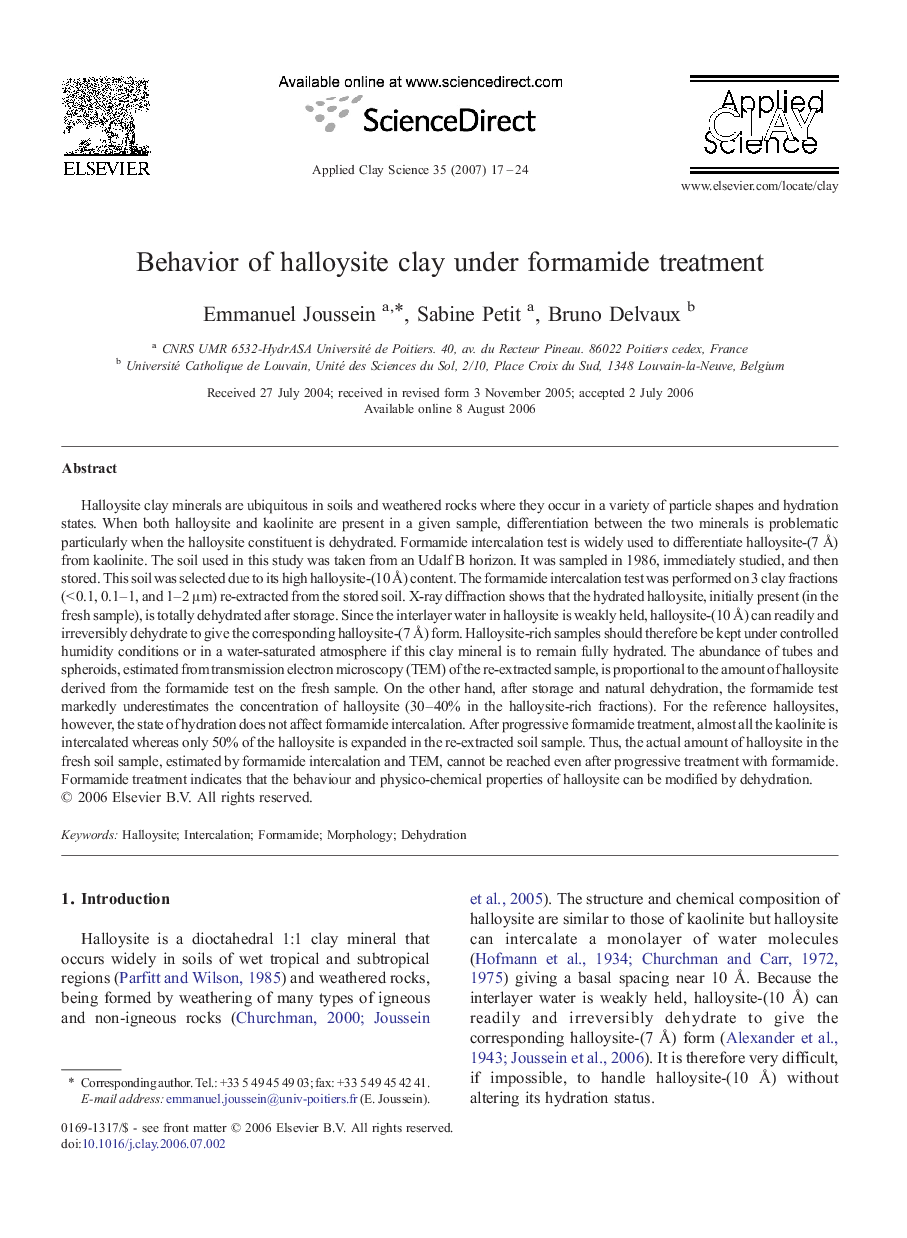| کد مقاله | کد نشریه | سال انتشار | مقاله انگلیسی | نسخه تمام متن |
|---|---|---|---|---|
| 1696664 | 1519137 | 2007 | 8 صفحه PDF | دانلود رایگان |

Halloysite clay minerals are ubiquitous in soils and weathered rocks where they occur in a variety of particle shapes and hydration states. When both halloysite and kaolinite are present in a given sample, differentiation between the two minerals is problematic particularly when the halloysite constituent is dehydrated. Formamide intercalation test is widely used to differentiate halloysite-(7 Å) from kaolinite. The soil used in this study was taken from an Udalf B horizon. It was sampled in 1986, immediately studied, and then stored. This soil was selected due to its high halloysite-(10 Å) content. The formamide intercalation test was performed on 3 clay fractions (< 0.1, 0.1–1, and 1–2 μm) re-extracted from the stored soil. X-ray diffraction shows that the hydrated halloysite, initially present (in the fresh sample), is totally dehydrated after storage. Since the interlayer water in halloysite is weakly held, halloysite-(10 Å) can readily and irreversibly dehydrate to give the corresponding halloysite-(7 Å) form. Halloysite-rich samples should therefore be kept under controlled humidity conditions or in a water-saturated atmosphere if this clay mineral is to remain fully hydrated. The abundance of tubes and spheroids, estimated from transmission electron microscopy (TEM) of the re-extracted sample, is proportional to the amount of halloysite derived from the formamide test on the fresh sample. On the other hand, after storage and natural dehydration, the formamide test markedly underestimates the concentration of halloysite (30–40% in the halloysite-rich fractions). For the reference halloysites, however, the state of hydration does not affect formamide intercalation. After progressive formamide treatment, almost all the kaolinite is intercalated whereas only 50% of the halloysite is expanded in the re-extracted soil sample. Thus, the actual amount of halloysite in the fresh soil sample, estimated by formamide intercalation and TEM, cannot be reached even after progressive treatment with formamide. Formamide treatment indicates that the behaviour and physico-chemical properties of halloysite can be modified by dehydration.
Journal: Applied Clay Science - Volume 35, Issues 1–2, January 2007, Pages 17–24